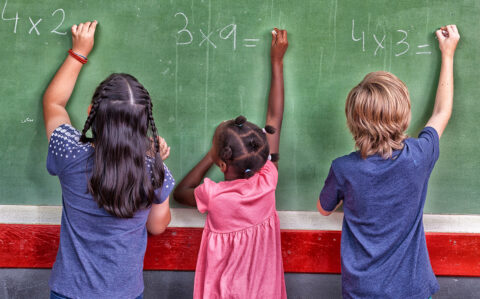Why I Center Student Experiences in My Math Class
Fourth grade teacher Neven Holland describes how equitable mathematics and quality content help to ensure all students have multiple avenues to access and approach math learning.
Related Resources
article
Confessions of a Lifelong Math Nerd
Educator Joshua Sawyer shares how instructional materials and high expectations are key to ensuring learning is accessible to all.
article
My Journey Toward Loving Math
Read more about how approaching math from multiple entry points and using different strategies and tools to solve problems turned educator Lynn Smith's world around.
article
Deep Dive: Mathematics for All – How Modeling Transforms Student Learning
Educator Tim Truitt shares why Math Practice 4 is integral to making mathematics relevant and meaningful for each and every student.


